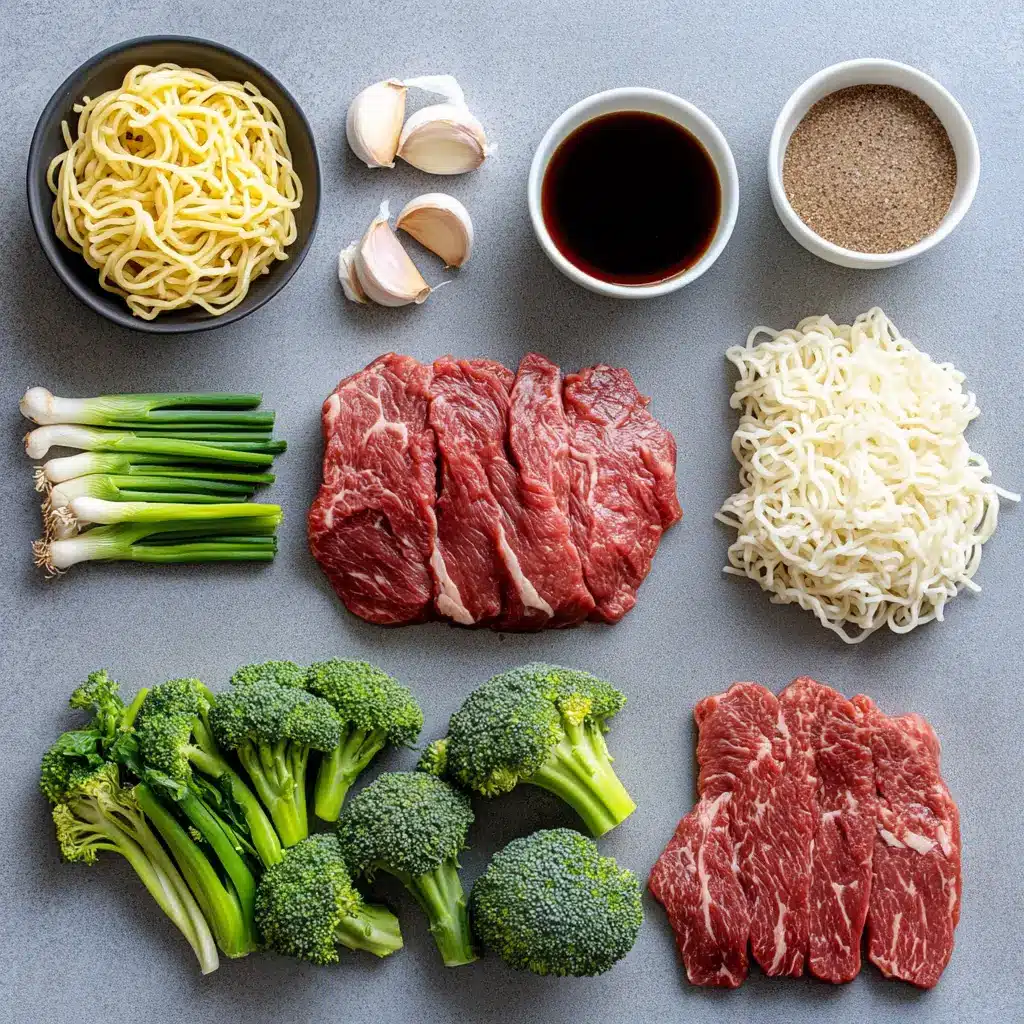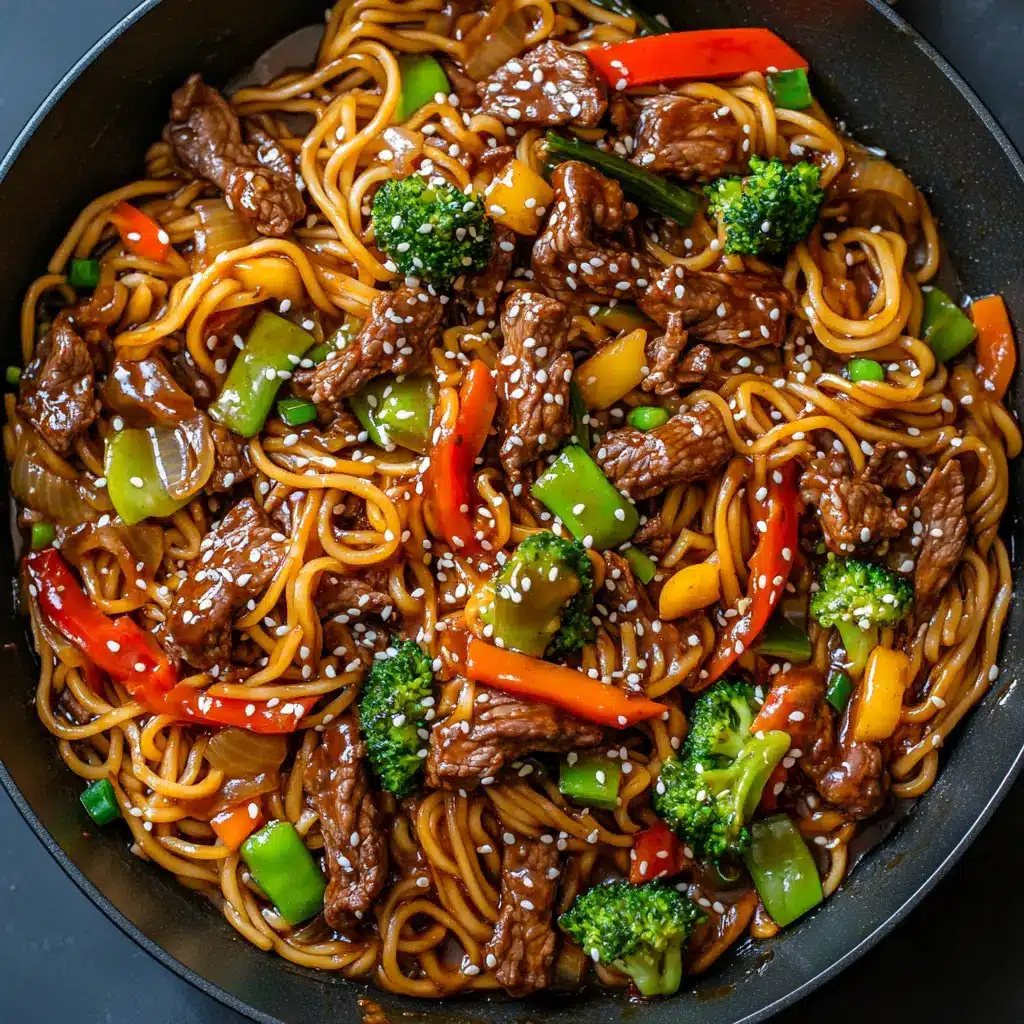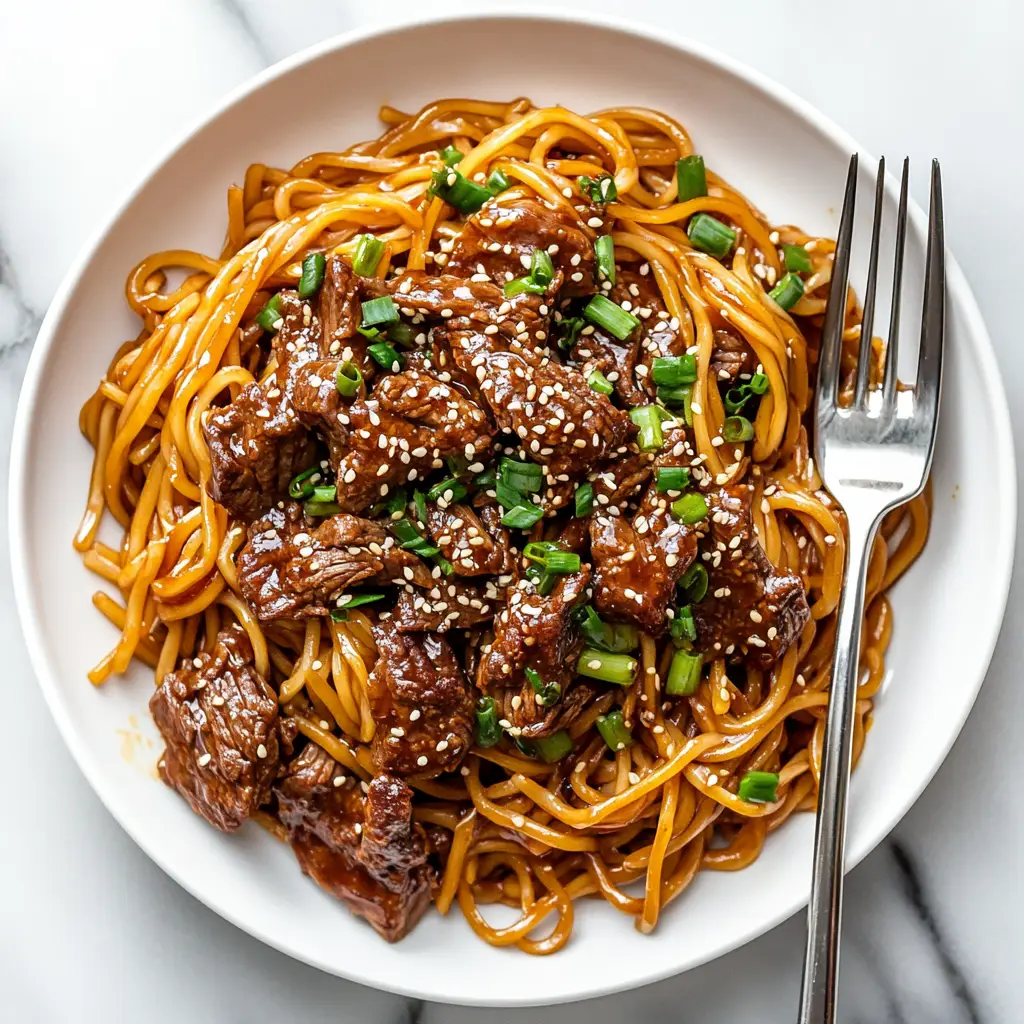Find In This Article
Introduction
Mongolian beef noodles—let me take you on a quick trip to flavor town! I’m Samuel, and this dish is close to my hearty, comfort-food-loving heart. Picture rich, savory-sweet beef tossed with tender noodles and crisp veggies—all in just one skillet. Perfect for those nights when you’re racing the clock but still crave something nourishing and satisfying. This recipe is as reliable as a dear friend: fast, flavorful, and family-approved.
Ingredients You Will Need

For the Beef & Sauce
- 1 lb flank steak, thinly sliced
- 2 Tbsp vegetable oil (or neutral oil)
- 3 cloves garlic, minced
- 1 Tbsp fresh ginger, grated
- ⅓ cup soy sauce
- ⅓ cup water
- ½ cup brown sugar
- 2 Tbsp hoisin sauce (optional for richness)
For the Noodles & Veggies
- 8 oz egg or chow mein noodles
- 1 cup broccoli florets (optional but adds great texture)
- 2 green onions, sliced
- Sesame seeds, for garnish
How to Make the Mongolian Beef Noodles
Step 1: Prep Your Noodles
Cook noodles according to package instructions. Drain and set aside. A splash of oil keeps them from sticking.
Step 2: Sear the Beef
Heat oil in a large skillet over medium-high heat. Once hot, add steak slices and sear them into tender-yet-caramelized goodness, about 2 minutes per side. Remove and set aside.
Step 3: Build the Sauce
Lower heat to medium. Sauté garlic and ginger for 30 seconds until aromatic. Pour in soy sauce, water, brown sugar, and hoisin sauce. Stir until sugar dissolves and sauce bubbles gently.
Step 4: Combine Everything
Return beef to skillet, toss to coat in sauce. Add noodles and broccoli, if using, and stir-fry until noodles soak up the sauce (1–2 minutes). Sprinkle with green onions and sesame seeds before serving.

Tips & Tricks
- Kick up the flavor: Add a pinch of red pepper flakes or a splash of sriracha.
- Avoid clumpy noodles: Toss cooked noodles with a teaspoon of oil after draining.
- Veggie swap-ins: Bell peppers, snap peas, or bok choy work beautifully.
- Make-ahead convenience: Double the sauce and beef, store noodles separately—just stir-fry briefly to reheat.
Here another option recipe using Beef: Ground beef and gravy over mashed potatoes.
Take a round in my Pinterest or my Facebook page for a variation of recipes.
A Few Words from Samuel
I know many of you don’t want to complicate dinner on weeknights. That’s why this Mongolian beef noodles recipe is a lifesaver—no marathon cooking sessions, just one skillet, big flavor, and ingredients you can find easily. It’s the kind of dinner that earns a round of “Mmm, what’s for dinner?” around the table without making you feel like a short-order cook.
Mongolian beef noodles make any night feel a bit more special. Whether you’re feeding hungry kids after practice or winding down after work, this dish delivers comfort and joy in one bowl. And because I’m all about practical deliciousness, feel free to pair it with a simple side—like steamed rice or a quick wrap (check out our [Chaffle Sandwich] recipe for more fun—and you’ve got a full meal.
FAQs
What is Mongolian beef sauce made of?
Mongolian beef sauce is a sweet-and-savory blend that hits all the right comfort notes. It’s typically made from soy sauce, brown sugar, garlic, and ginger, often with a splash of water or broth to balance it out. Some recipes add hoisin sauce or cornstarch for thickness and depth. It’s that glossy, caramel-like sauce that clings to the beef and noodles, making every bite irresistible.
What is a Mongolian noodle?
“Mongolian noodles” aren’t a traditional dish from Mongolia—funny enough! In American-Chinese cuisine, it usually refers to egg noodles or wheat-based stir-fry noodles that are tossed in Mongolian-style beef sauce. They’re chewy, satisfying, and perfect for soaking up all that saucy goodness.
What gives Mongolian beef its flavor?
The magic’s in the sauce, but there’s more to the story! Tender beef (usually flank steak) is sliced thin and seared until it gets those crispy, caramelized edges. Combine that with the rich, garlicky soy sauce mixture sweetened with brown sugar—and voilà—you’ve got that signature bold, slightly sweet, umami-packed flavor that keeps everyone coming back for seconds.
What is the difference between Mongolian beef and Chinese beef?
Great question! While Mongolian beef is a popular dish in American-Chinese restaurants, it’s not rooted in traditional Mongolian cuisine. Instead, it’s a Westernized stir-fry dish known for its sweet soy glaze. On the other hand, traditional Chinese beef dishes can vary widely across regions—like spicy Szechuan beef, savory Cantonese beef with oyster sauce, or the soy-and-star-anise richness of red-braised beef. So, think of Mongolian beef as the flavorful cousin with a sweet tooth and a love for takeout menus.

